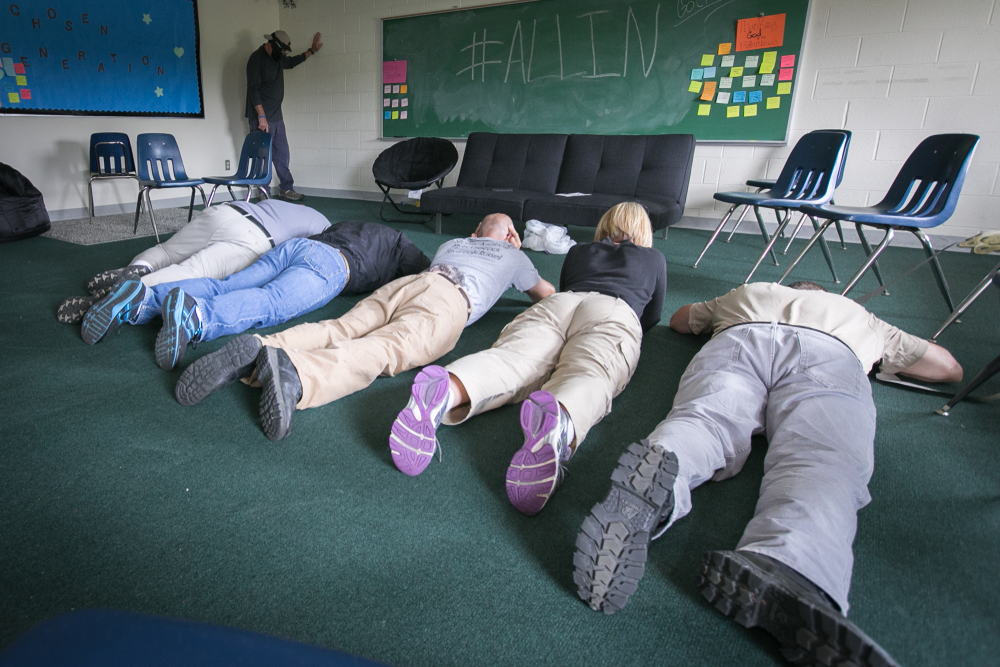Active Shooter Training for Schools: Critical Do’s and Don’ts

To be truly effective, active shooter training for schools requires several critical elements, primary among which is an evidence-based threat assessment upon which exercises and training must be based.
Two other elements that are critical to successful training are ethics and empathy. Without these elements, teachers and students may not grasp or accept the life-saving skills that these training programs are designed to impart.
Unfortunately, many emergency response training providers fail to recognize the value of these three elements. To help the educational sector obtain the best possible active shooter training for schools, Critical Path Solutions offers these general recommendations for what you should and should not do in the process of arranging emergency preparedness planning, training and exercises for your institution.
Active Shooter Training Don’ts for Educational Institutions
When schools first sought to provide disaster preparedness training and drills, some critical mistakes were made. You might recall an incident that took place in Indiana in January of 2019 at Meadowlawn Elementary School in Montecito. During an active shooter drill, elementary school teachers were forced to kneel and then “shot,” execution-style, with pellet guns by law enforcement officers from a local sheriff’s department.
Details of this horrifying incident were not announced to the public until several months later, when a representative of the Indiana State Teachers’ Association testified before state legislators in protest of the event. Teachers pushed to have training sessions legally banned, rather than have to face a similar situation.
Subsequently, a group of Meadowlawn teachers filed a lawsuit against White County, the White County Sheriff’s Office, the current and former county sheriffs and the deputies who carried out the exercise. When further details emerged, in addition to being shot with AirSoft weapons, the teachers were also threatened, mocked and verbally abused.
One of the deputies involved was quoted as saying, “Yes, teachers were shot but it’s part of the training.”
Several teachers suffered multiple physical injuries while others continue to battle ongoing psychological challenges that resulted from the trauma. Even today, teachers across the country express fear and doubt when faced with the prospect of participating in preparedness drills and exercises, thanks to the horrific events that occurred at Meadowlawn Elementary School.
Key takeaways from the Meadowlawn incident help illustrate the most important elements to avoid in developing a school active shooter training program.
- DON’T lose sight of the objectives of active shooter preparedness programs.
- DON’T underestimate the importance of using a professional preparedness consultant.
- DON’T compromise ethics or empathy when designing active shooter response programs.
Using this example for what not to do, let’s look at how to properly approach the design and launch of an effective active shooter preparedness program for schools.
Critical Items to Do for Shooter Preparation & Training
At the basis of every effective disaster preparedness plan is a well-developed threat assessment. This analysis essentially becomes the roadmap that advises policies, procedures, plans and training.
Effective training and repeated practice (typically in the form of drills) is the only way to help potential victims prepare for what they might encounter should the unthinkable happen at school. To learn the skills – and to help ensure they remember them in the face of an actual situation – participants must have a high level of confidence and comfort in the experience.
Truly effective active shooter training programs help participants develop and fine-tune empathy and emotional intelligence. They must empower educators, administrators, staff members and students and provide them with the skills necessary to make life or death decisions in a heartbeat. This includes helping participants learn to remain calm when faced with potentially dangerous scenarios.
What programs cannot do (and remain effective) is cause fear of participation in training exercises and drills. If teachers, students or any other participants are too frightened of the training itself to be fully involved, they cannot be expected to learn or retain much of anything. Just the opposite, in fact. They might only grasp or remember a tiny portion of the training.
To develop an effective preparedness program, adhere to best practices for imparting skills and building confidence, as well as the following.
- DO conduct a full threat assessment.
- DO consider, address and empower all stakeholders.
- DO craft responsible policies in response to identified threats.
- DO make any necessary facility safety modifications promptly.
- DO reinforce training with frequent and regular drills.
- DO consult an experienced threat preparedness professional.
Critical Path Solutions has the background and experience to identify all potential threats, asses them, and develop the right set of responses under a variety of scenarios. We help our clients build a culture of safety and confidence while helping them prepare for a variety of plausible threats. We identify all stakeholders and the appropriate approach for imparting critical information and skills.
Ultimately, we provide the knowledge and skills necessary for keeping your faculty, staff, students and visitors ready to handle whatever threats might arise.
Contact us today to learn more about how our comprehensive, real-world solutions, including emergency response preparedness and active shooter training for schools.
